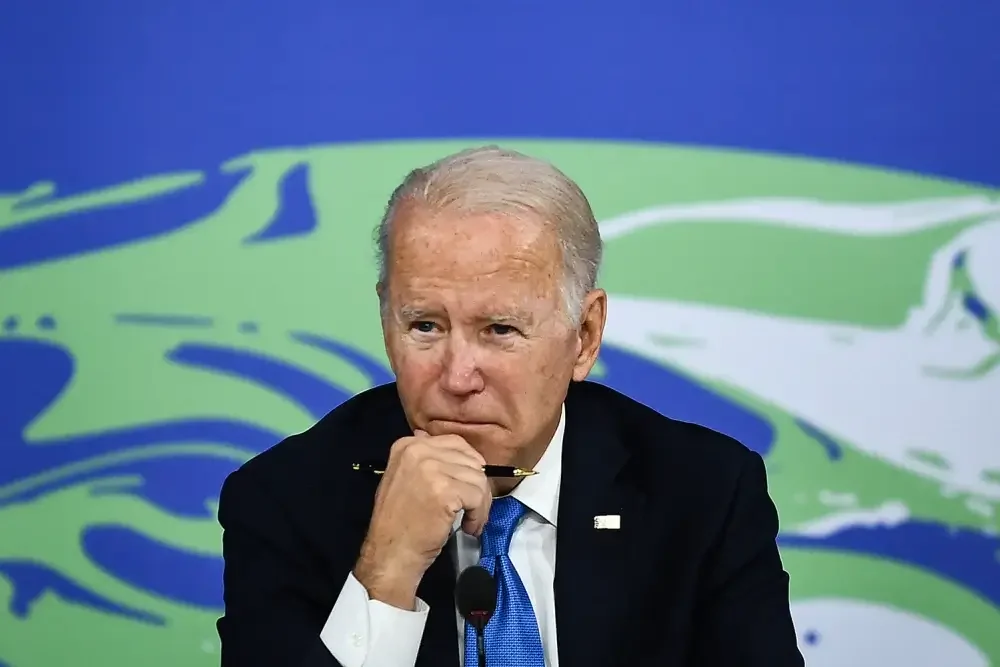 By Charles Kenny, the director of technology and development and a senior fellow at the Center for Global Development, and Scott Morris, the co-director of sustainable development finance and a senior fellow at the Center for Global Development.
By Charles Kenny, the director of technology and development and a senior fellow at the Center for Global Development, and Scott Morris, the co-director of sustainable development finance and a senior fellow at the Center for Global Development.
As usual, U.S. assistance pays everyone except governments actually providing services to the world’s poor.
In recent weeks, U.S. President Joe Biden made good on the promise he made at last year’s G-7 summit in Cornwall, England, to launch a set of infrastructure investments in developing countries under the banner of Build Back Better World (B3W). His administration has rolled out new initiatives on digital connectivity, child care infrastructure, and health facility electrification, three areas that are surely important to global development progress. But, sadly consistent with every major U.S. aid initiative of the past 20 years, B3W appears to channel virtually all its funds through a Washington bubble of agencies, contractors, and nongovernmental organizations, providing hardly a cent of bilateral aid to developing-country governments. Whether you are a softhearted advocate for development or a hardened hawk aiming to contain China, that’s a huge mistake.
The United States, the world’s largest aid donor, directs its spending to just about everybody except the governments of developing countries. It pays the U.S. military to provide emergency relief services; subsidizes private firms to invest in infrastructure projects; funds NGOs to deliver aid in the health, education, and humanitarian sectors; and pays billions of dollars to private consulting firms within spitting distance of the White House to provide so-called technical assistance. According to our calculations, of the $51 billion in U.S. aid tracked by ForeignAssistance.gov in fiscal 2020, about 40 percent was spent by the U.S. government itself to buy goods and pay salaries, for example. Another 20 percent was administered by U.S.-based firms and nonprofits. A little more than 30 percent went to international organizations—the United Nations and other multilateral bodies—and international NGOs. Of the small remainder, foreign firms and nonprofits, mostly based in recipient countries, received just above 5 percent. That leaves partner country governments in the developing world the recipients of just 3.9 percent of U.S. aid spending. Take out Jordan, which receives a large part of U.S. bilateral development aid, and that drops to a mere 0.7 percent.
Today’s proponents of foreign aid, particularly on Capitol Hill, are typically at pains to emphasize how little aid goes directly to other governments. The prevailing attitude is that it’s too risky to direct grants and loans to foreign governments. With lending, the fear is that countries will default on their debt, as has frequently happened in the past. But the U.S. government is averse to bilateral grants as well, fearing corruption and incompetence. It didn’t help the cause of direct bilateral aid in Washington when, in 2020, the World Bank released a study that found disbursements to highly aid-dependent countries coincided with increased financial flows into tax havens.
Expand your perspective with unlimited access to FP.
That said, the study estimated that in these particularly poor and weakly governed developing countries, 5 percent of World Bank assistance leaked offshore. Compared to other leakage rates—such as for oil windfalls in oil-dependent states—that is actually quite low. The study’s authors note that “the difference may be due to the fact that foreign aid is generally subject to monitoring and control by the donors.” Considering the increasingly strong evidence of the positive effects of direct bilateral aid—such as the growth impact of World Bank support to poor country governments and reductions in child mortality as a result of U.S. aid to weakly governed states—we considerably overestimate the risks of direct support.
The aid architecture that has come to replace government-to-government support in the United States carries its own set of risks. These include Beltway bandits putting profits over people and private sector deals that show little impact. And it leaves out an indispensable partner for development progress—and for providing the public goods and services that sustain human and environmental wellbeing. Governments are responsible for 83 percent of infrastructure investment in developing countries, provide the vast bulk of health and education services, set policies, and write regulations.
Today’s U.S. aid architecture provides next to no finance to directly influence or support government activities. Whether your development priority is renewable energy or pandemic preparedness, trying to work around rather than through governments is fighting with one hand and three more fingers tied behind your back.
The disconnect between Washington’s financing tools and the global south’s development needs is only getting worse. The COVID-19 pandemic has exploded deficits even as rich countries are pressuring poor ones to bear new budget burdens by tackling climate change problems for which they bear little responsibility. And developing countries are acutely vulnerable to movements in financial markets: Interest rate increases in the United States are already increasing debt service obligations and shutting some governments out of international finance altogether. Kenya, for example, has signaled it may scrap a new government bond issuance after assessing the likely cost in the new interest rate environment. (The country might count itself lucky: In 2020, it was one of just two countries worldwide to receive direct loans from the U.S. government—though the $9.4 million total was small change compared to the $1 billion Nairobi was hoping to raise on the market.).
